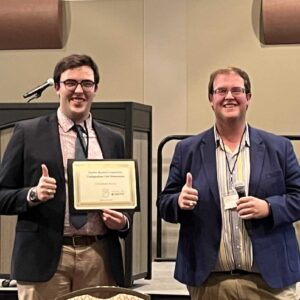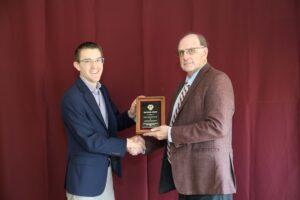March 2024 newsletter now online
March 20th, 2024
Check out our latest news on the latest faculty and staff news, awards, and events that are happening with our March 2024 Newsletter. Read more at https://tx.ag/SCSCMar24Newsletter
March 20th, 2024
Check out our latest news on the latest faculty and staff news, awards, and events that are happening with our March 2024 Newsletter. Read more at https://tx.ag/SCSCMar24Newsletter

February 28th, 2024
More than 150 faculty, staff and students participated in the 10th annual Texas A&M Plant Breeding Symposium, which is part of the Corteva Symposia Series. We also had several students who presented their research in poster or oral presentation competitions. We also had three students from other universites who were awarded travel scholarships who presented… Read More →

January 17th, 2024
Congratulations to all our faculty, staff and students who received awards during the Department of Soil and Crop Sciences’ annual meeting held on Jan. 11 at the Scotts Miracle-Gro Turfgrass Research Facility in College Station. Kevin McInnes, Ph.D., and David Stelly, Ph.D. were recognized for their years of service with the university. Stelly has been… Read More →
December 15th, 2023
Check out our latest news on December graduation, as well as other things that are happening with our December 2023 Newsletter. Read the December 2023 newsletter
November 20th, 2023
The Department of Soil and Crop Sciences would like to congratulate our newest graduates for the Spring 2022 semester! We are proud of you for the efforts you have made throughout your time with the department and wish each of you the very best in the next phase of your life! Undergraduate Students Graduate Students

August 9th, 2023
The Department of Soil and Crop Sciences celebrated the graduation of 13 students who received their diplomas on Saturday, August 12 at Reed Arena. One undergraduate student and 12 graduate students were among thousands who graduated during the morning ceremony and at the doctoral hooding ceremony Saturday afternoon. The graduate students consisted of seven master’s… Read More →
May 5th, 2023
The Department of Soil and Crop Sciences congratulates twenty-six of our newest graduates for the spring 2023 semester! A total of 11 undergraduates were celebrated during the College of Agriculture and Life Sciences commencement ceremony on Thursday, May 11, and 15 total graduates during the master’s degree commencement and doctoral hooding ceremony on Saturday, May… Read More →
April 19th, 2023
The Department of Soil and Crop Sciences congratulates all our students who received scholarships and awards during its annual Awards and Recognition Banquet held on Thursday, April 13 at the Annenberg Presidential Conference Center. Former professor Sam Feagley, Ph.D., delivered the keynote address. The 2022-2023 Soil and Crop Sciences Outstanding Students were recognized. The recipients… Read More →
January 20th, 2023
Congratulations to all our faculty, staff and students who received awards during the Soil and Crop Sciences’ annual meeting held on January 14 in College Station. The department recognized the retirement of Dr. Jaroy Moore, Director, Texas A&M AgriLife Research and Extension Center in Lubbock. Moore has been with the Texas A&M AgriLife Extension Service… Read More →